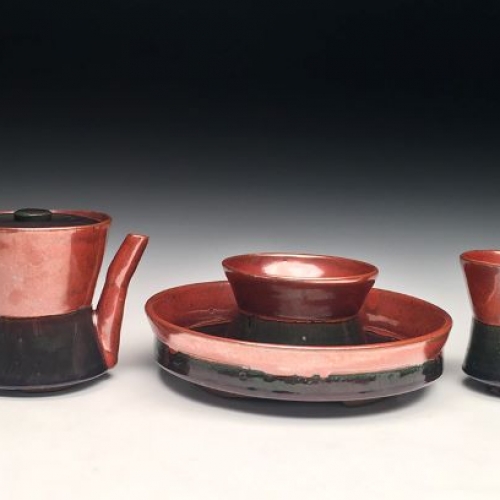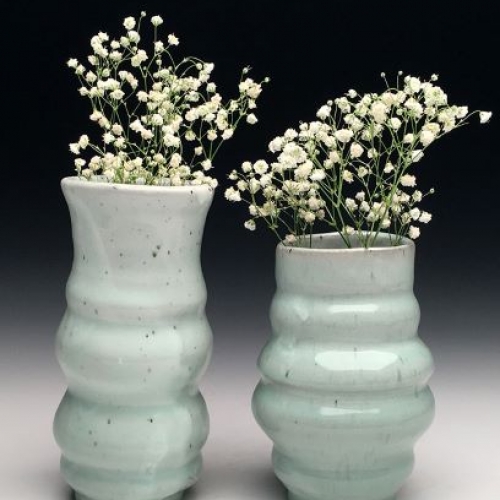Ceramics: Academic Program
 Undergraduate students can earn the Bachelor of Art (BA) degree in Art or the Bachelor of Fine Arts (BFA) degree in Art, with an emphasis in ceramics. Graduate students earn the Master of Fine Art (MFA) degree with an emphasis in ceramics.
Undergraduate students can earn the Bachelor of Art (BA) degree in Art or the Bachelor of Fine Arts (BFA) degree in Art, with an emphasis in ceramics. Graduate students earn the Master of Fine Art (MFA) degree with an emphasis in ceramics.
The BA degree has a deeper and wider general education foundation than the BFA degree. The BA degree provides flexibility for combining the study of art with a different field of study as a required minor. BA students can use their art electives to focus on the studio area of their choice, such as ceramics. Students can choose to enter the BFA Studio Art program during the regular UM admissions process. After completing the foundation core and having a minimum cumulative GPA of 2.0 and 2.5 GPA in all art and art history courses, BFA students participate in the BFA Foundations Review to stay in the BFA degree. BFA students then gain wider training across the studio areas, gain depth in their area of emphasis, build a professional portfolio, and hold a final thesis show.
The MFA degree is a three-year program that prepares students to teach at the college level and work as a professional artist. The third year is dedicated to the creation of the MFA thesis exhibition.

Meet Will McComb, a recent MFA graduate from the ceramics program.
“As soon as you touch the clay it responds and there is something really empowering and powerful about that. The longer I worked with it the more interested I got in my ability to construct and build things and then eventually to make pottery”
Ceramics Courses
Ceramics courses encourage students to explore individual ideas through material and process. Through technical experimentation, they become skilled at making clay and glazes and firing electric, gas reduction, salt, soda, and woods kiln. The featured courses below provide more detail and samples of student work.
Here are all ceramics courses.
- Art 340. Beginning Ceramics. Introduction to clay through constructive techniques, emphasizing three-dimensional form and design.
- Art 341. Pottery. Exploration of the vessel form, using the potter’s wheel as the primary construction technique.
- Art 342. Handbuilding. Further exploration of the three-dimensional form, with clay and glazes the primary media.
- Art 343. Intensive Wheel Throwing. Emphasis on the skills of wheel throwing through repetition, with focus on technique and concept.
- Art 441. Advanced Ceramics. Advanced study of three-dimensional form and ceramic techniques, including in-depth study in one area of concentration with strong emphasis on individual expression and research.
- Art 442. Clay and Glaze Calculation. Understanding and experimenting with raw ceramic materials and their use in the formulation of clays and glazes; emphasis on proper, safe handling of materials, accurate and effective use of material and process, and the implementation of individual results.
- Art 541. Pottery and Ceramics. Special problems in pottery and ceramics with emphasis on individual development.
- Art 542. Ceramic Material Research & Development. Advanced problems in clay and glaze calculation with an emphasis on individual development, technical results, and historical ceramic research.
- Art 543. Advanced Wheel Throwing. Advanced problems in throwing with emphasis on individual development; emphasize the skills of wheel throwing through repetition.
- Art 641. Pottery and Ceramics. Special problems in pottery and ceramics with emphasis on individual development.


